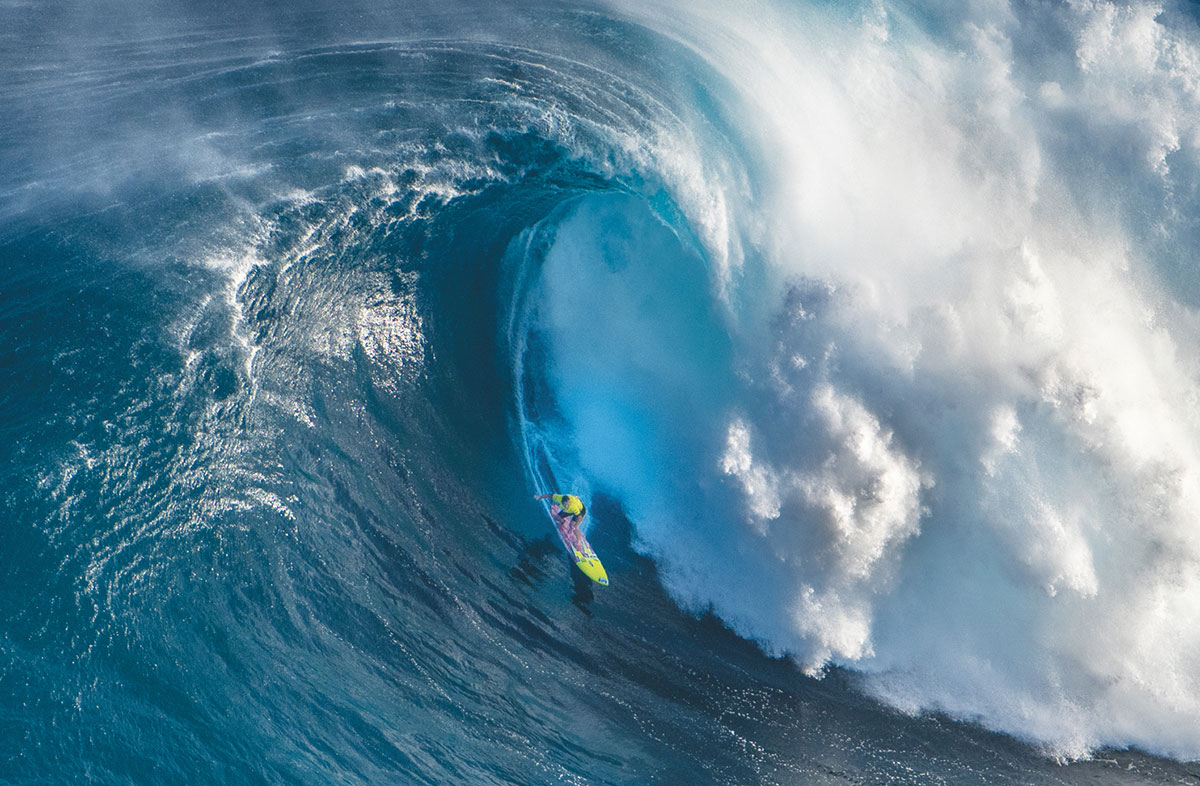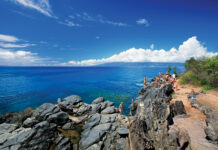Story by Lara McGlashan | Photography by Daniel Sullivan

You are looking out over the vast expanse of the Pacific from the high cliffs on the north shore of Maui. The water appears smooth and tranquil. A gentle breeze blows and the ocean undulates toward the shore, waves marching along in orderly fashion.
This view is typical of Peʻahi on a balmy summer’s day, however in only a few months’ time this peaceable calm will vanish as the swells get larger and rougher and winter closes in. If you’re lucky, you might bear witness on one of the few days of the year when the ocean literally rises to the height of an eight-story building and rushes forward with the raw temper of a grizzly bear.
Jaws is going off.
In order to create the oceanic phenomenon that is Jaws, certain sequential steps need to happen. First, a strong winter storm thousands of miles away in the north Pacific has to push the ocean’s surface with winds averaging 40 to 50 knots. This creates swells — enormous ripples of ocean — which emanate outward in haste until they approach land. As the sea floor becomes shallower, the swells rise in both speed and amplitude and create waves which finally terminate, crashing against the shore in a spectacular riot of foam and tumult.
Now, let’s say that same raging storm pushes the ocean water in a very specific direction (NW-NE) and the winds blow along a particular course (E-SE) directing the waves toward the north shore of Maui. As the swells approach land, they are funneled first down and into an ancient ocean trench some 100+ feet deep, then are forced quickly back up and onto a shallow 20-foot reef. This sudden vertical jump in marine terrain drives the energy of the wave skyward, resulting in the monstrous wall of water that has become the forbidding hallmark of this isolated shore break.
“An immeasurable amount of water is being displaced and the force is unstoppable. It is pretty absurd we put ourselves in that position, but in some satisfactory way we feel good about it.” — Kai Lenny





